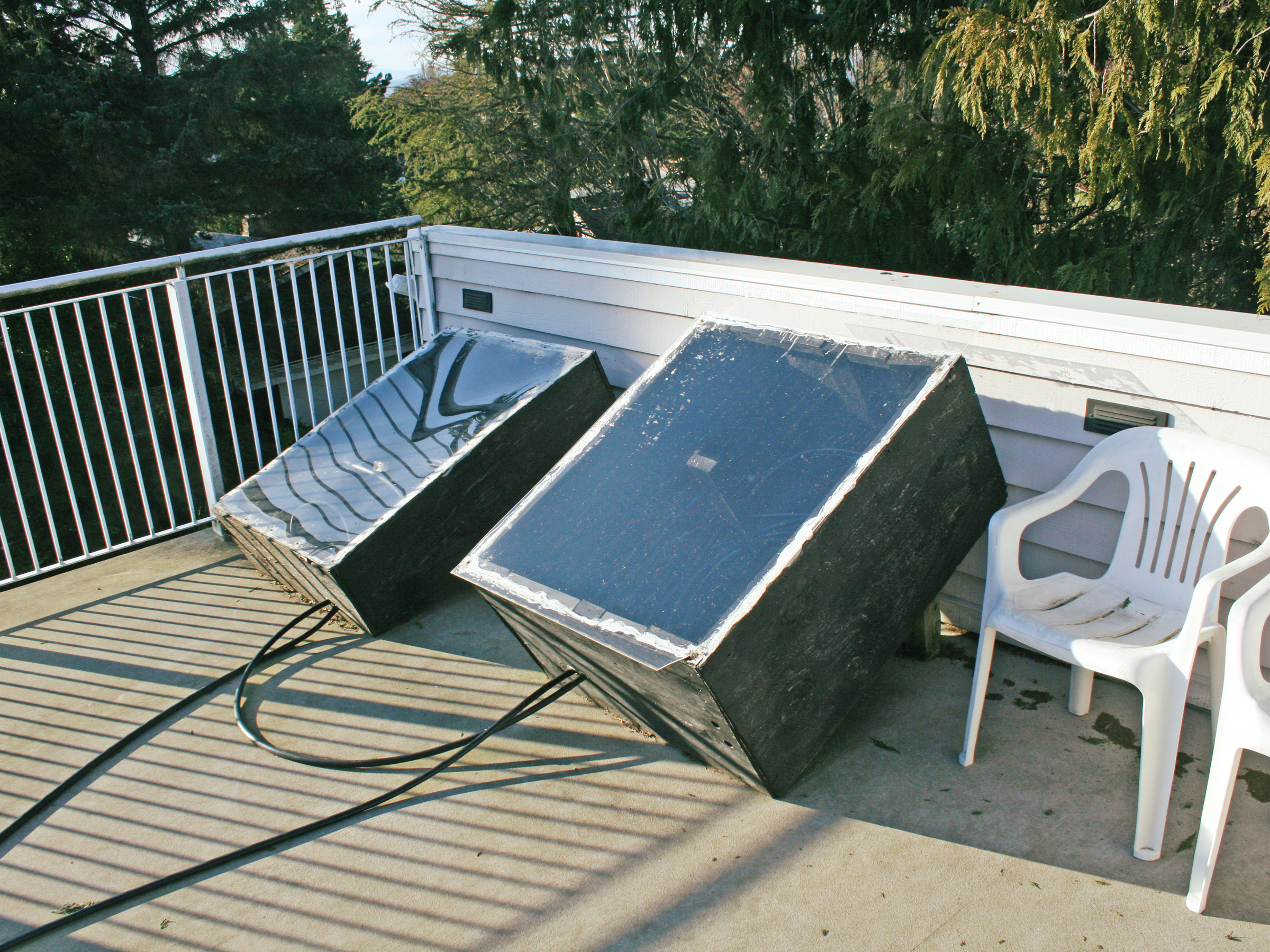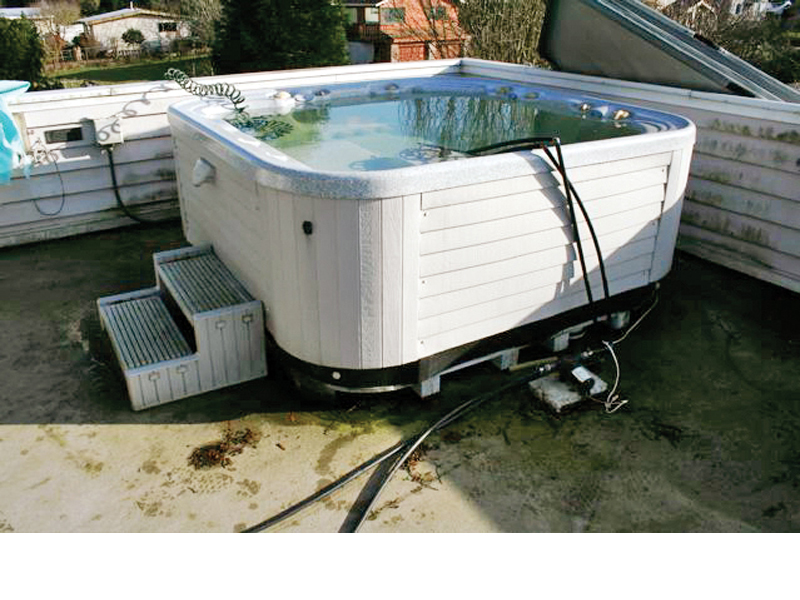Back when I lived in California, I heated the water for my house and hot tub using some 1970s “energy crunch”-era solar thermal collectors that I found at a junkyard. They were a nice design from Israel, with a large plexiglass collection surface and an insulated horizontal tank with its outlet up top, where the hottest water rises.
Those restored units were all the water heating we needed for about 9 months of the year, and I installed them on a hillside rather than the roof for easier maintenance. (Alternative energy means lots of repairs; if you’re harvesting energy from the environment, your equipment will be, well, out in the environment.)
Then I moved to a newer house in Seattle with a fancy automatic hot tub on the rooftop deck. But I was appalled when I saw that it cost up to $40 in electricity each month to heat this mass of water and leave it covered outside overnight.
So I came up with this simple and inexpensive solar system that adds heat to the hot tub during the day so that the main electric heater doesn’t have to work as hard after the sun goes down.













